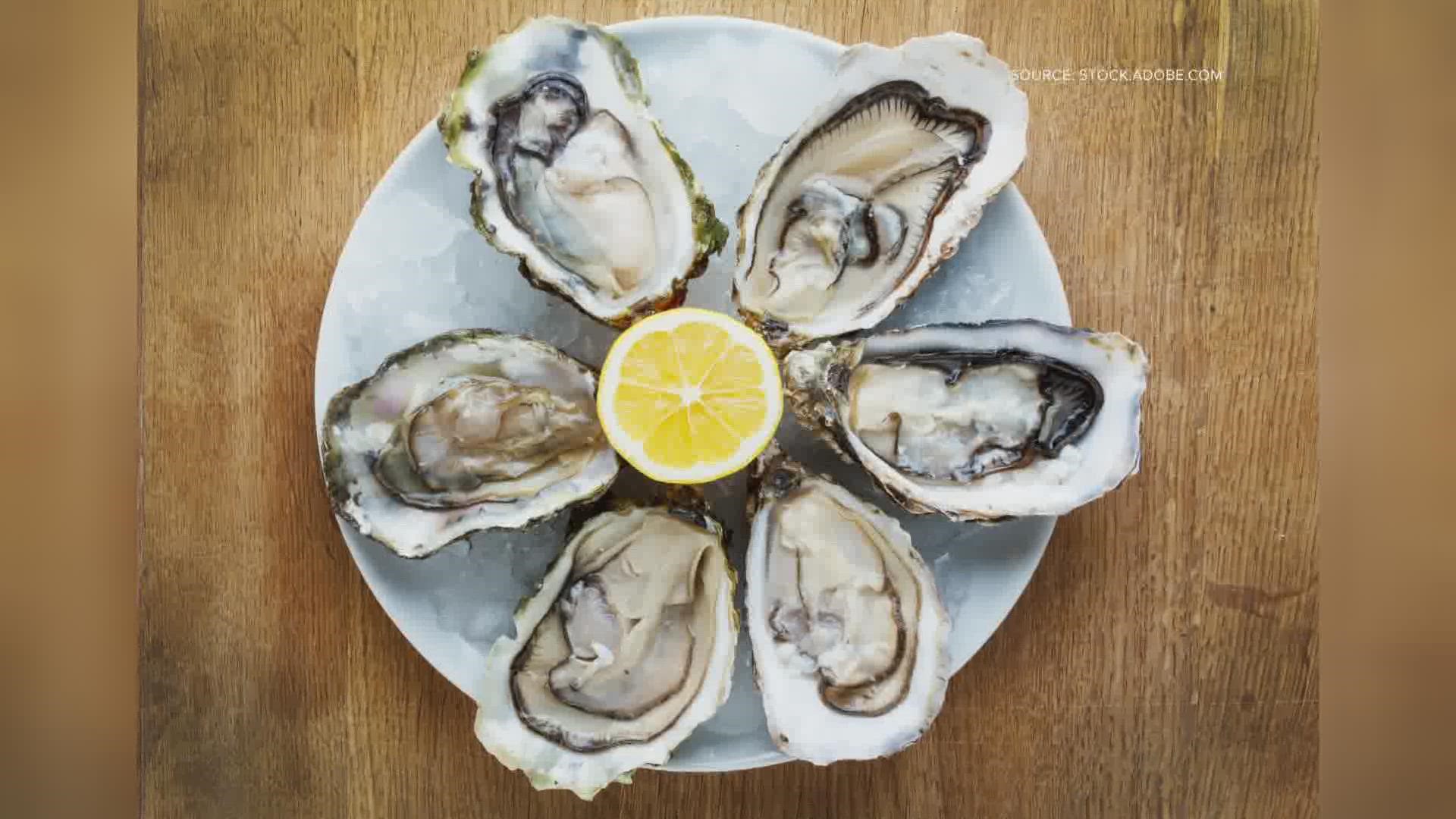GREENSBORO, N.C. — Turkey is the centerpiece on most Thanksgiving meals, but culinary historians tend to agree the first Thanksgiving at Plymouth in 1621 likely had abundant shellfish.
So, let's crack the shell on a longstanding debate, before you serve these delectable h'ors d'oeuvres for the holidays.
Earlier this year, Florida health leaders reported two people died -- just weeks apart -- after eating raw oysters. The cases happened in August, in the heat of the summer. In 2019, there was a similar incident in Wilmington.
Their stories brought an age-old claim back into the spotlight, on the heels of North Carolina Oyster Week -- the kickoff to the NC oyster harvest.
THE QUESTION
True or false: you should not eat raw oysters in months without an 'r' -- May, June, July and August.
The theory behind this 'rule' is warmer temperatures can harbor bacteria in oysters left sitting on docks. Also, warmer water can contain higher red tide levels, which can contaminate shellfish.
THE SOURCES
- The Food and Drug Administration
- The American Council on Science and Health
- The NC Department of Environmental Quality (DEQ)
- Alice Smith, RD - Alice Approved
THE ANSWER
The claim is false.
Improvements to refrigeration and farming have made oysters edible year-round, though there always is a risk in consuming any raw shellfish.
THE PROCESS
Registered dietitian Alice Smith, RD, explained, "We see oysters year-round in supermarkets and on restaurant menus, which makes you question if the old advice is still good advice. Luckily, times and oysters have changed, and it can be safe to eat them year-round, but you always want to be careful when consuming them raw."
The CDC warned only heat can destroy the bacteria known as 'vibrio vulnificus,' found in warm coastal areas where oysters feed. That is why the FDA advises people with certain medical conditions not to eat raw oysters, because of the high risk of serious illness or death from consuming this bacteria.
That said, Smith acknowledged advancements in oyster harvesting have come a long way in mitigating risks.
"By law, oysters must be labeled with the time and place of harvest. Remember, when buying oysters, you want to buy them from reputable sources, look at the label to see when they were harvested and where they came from and always store them properly by keeping them cold," Smith advised.
The American Council on Science and Health noted 90 percent of today's oyster farms are in cold waters, anyway. The spawn season is faster, making oysters edible all months of the year. The NC DEQ explained oyster harvesting is underway now, with the season running October to March.
The FDA emphasized the safest way to consume oysters is by practicing the following:
- Eat them fully cooked at restaurants.
- When preparing them at home, throw away raw oysters that already have opened before cooking.
- Throw away any oysters that do not open when cooked.
Do you have a question you want verified? Reach out to Meghann Mollerus via:
Facebook: Meghann Mollerus News
E-mail: VERIFY@wfmy.com
Twitter: @MeghannMollerus

